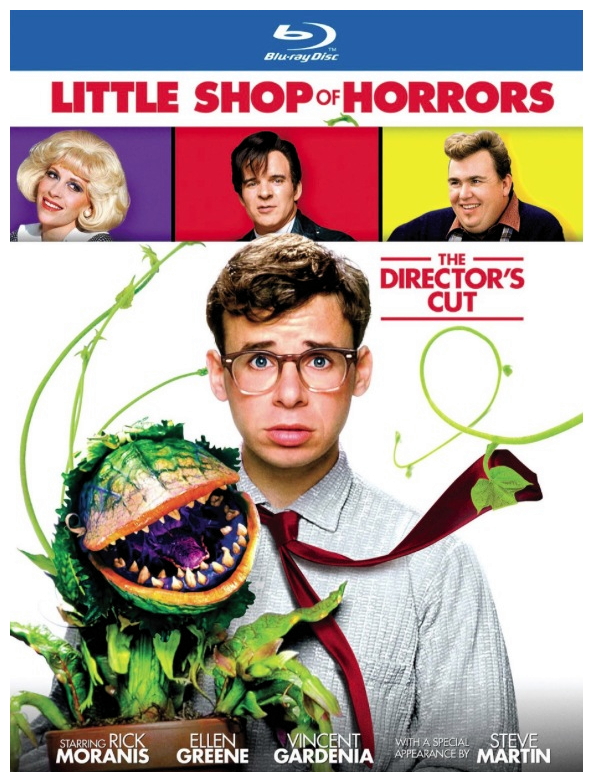
SYNOPSIS:
“Seymour Krelborn is a nerdy orphan working at Mushnik’s, a flower shop in urban Skid Row. He harbours a crush on fellow co-worker Audrey Fulquard, and is berated by Mister Mushnik daily. One day as Seymour is seeking a new mysterious plant, he finds a very mysterious unidentified plant which he calls Audrey II. The plant seems to have a craving for blood and soon begins to sing for his supper. Soon enough, Seymour feeds Audrey’s sadistic dentist boyfriend to the plant and later, Mushnik for witnessing the death of Audrey’s ex. Will Audrey II take over the world or will Seymour and Audrey defeat it?” (courtesy IMDB)
REVIEW:
Roger Corman‘s genuinely funny cult classic The Little Shop Of Horrors (1960), famously made in two days and one night, is set in a Skid Row flower shop. Seymour Krelboyne (Jonathan Haze) is a schlemiel and unappreciated assistant to penny-pinching florist Gravis Mushnick (Mel Welles). He invents a new plant by combining two carnivorous plants – a butterwort, also known as a pinguicula, with a venus flytrap – and names it Audrey Junior after his equally dimwitted girlfriend (Jackie Joseph), who also happens to be Mushnick’s Jewish-princess daughter. Seymour soon discovers that not only can his new plant talk, but it also craves human blood. It grows to enormous proportions after feeding and becomes the media buzz of Skid Row, but Audrey Junior soon wants more than just blood – it demands human flesh too, and lots of it! This low budget gem is a parody of every mad-scientist movie in which blood is needed to keep some experimental creature alive, and of every fifties science fiction film in which there is a giant mutation, and numerous other horror movies. It mimics Jerry Lewis comedies, with Seymour as the man-child with the IQ of a fencepost, a good heart, a lousy personality, and work habits that would drive any employer insane.

It also sends up television sitcoms, with a strict three-camera set-up in which everyone faces the camera (this is one film which a laugh-track might have actually made it funnier) and makes fun of Dragnet – the terse unemotional dialogue between investigating police detectives Joe Fink (Wally Campo) and Frank Stoolie (Jack Warford) is hilarious. It’s also a satire, and the use of Jewish stereotypes don’t really offend because they’re all too ridiculous to be taken seriously. The plant, which grows when fed (Seymour gets a raise) and shrivels when starved (Seymour gets fired) can be seen as a metaphor for the ups-and-downs of fame and, significantly, it works on its own terms as good, absurd comedy. The cast is marvellous, particularly Welles as the petulant florist, Joseph is delightful (“I’m so hungry I could eat a hearse!”), Dick Miller as a low-key flower-eater (to counter the man-eating flower), Myrtle Vail as Seymour’s hypochondriac mother, and Jack Nicholson as the squeaky-voiced masochist Wilbur Force, who works himself to orgasm while visiting the local dentist, Doctor Pheobus Farb (John Shaner). Best of all is the despicable murderer Audrey Junior, voiced by scriptwriter Charles B. Griffith himself, burping, spitting out what can’t be digested and demanding more.

What goes around comes around. This low-budget (US$30,000) movie was adapted in 1982 as an off-Broadway musical which, in turn, was given the big-budget (US$25 million) feature-film treatment directed by puppet-master Frank Oz. Little Shop Of Horrors (1986) stars Rick Moranis – reprising his Ghostbusters (1984) geek – as Seymour Krelborn, a nerdy employee of Mushnik’s Flower Shop, a ghetto florist in the heart of Skid Row. Seymour fancies co-worker Audrey (Ellen Greene), a lacquered blonde with a push-up bra and Marilyn Monroe squeal whose masochistic relationship with demented dentist Orin Scrivello (Steve Martin) leaves her battered and bruised: “I know Seymour’s the greatest, but I’m dating a semi-sadist…” she croons, but all that is about to change when Seymour purchases a strange and unusual plant from a Chinese market during a sudden total eclipse of the sun. Christening the cabbage-like sprout Audrey II, Seymour discovers his leafy new pal has special requirements: “I’ve given you sunlight, I’ve given you rain, guess you’re not happy unless I open a vein…” he concludes. Nurtured on blood, Audrey II reinvigorates Mushnik’s Flower Shop and suddenly business is, um, blooming but, when the fearsome foliage demands human victims, guess who’s on the menu?
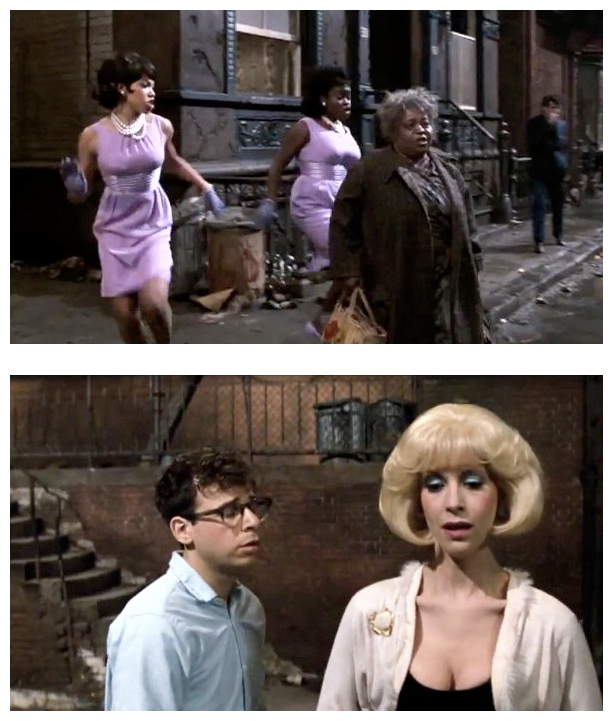
Punctuated by ebullient musical numbers and cameo appearances by Christopher Guest, John Candy, James Belushi and Bill Murray, Little Shop Of Horrors successfully cross-pollinates the musical with schlocky movies, throwing allusions to Motown, Broadway and the doo-wop sensibilities of the sixties into the potting mix. Those who caught this romp during its successful run three decades ago (US$40 million box-office) will no doubt feel a twinge of quasi-nostalgia, particularly for Steve Martin‘s show-stopping contribution (“I thrill when I drill a bicuspid, it’s swell though they tell me I’m maladjusted…”) that threatens to upstage the film’s state-of-the-art animatronic star. Designed by effects artist Lyle Conway and brought to rowdy life by the Four Tops vocalist Levi Stubbs (first choice Eddie Murphy opted out), Audrey II is a tentacled jive-talkin’ loose-lipped creation who belts out infectious songs (by Alan Menken and Howard Ashman) with attitude-ridden gusto. With Martin chewing the scenery, and Audrey II chewing the cast, Little Shop Of Horrors is an exuberant and supremely silly pastiche whose goofy charm, lyrical genius and glorious pastel colour scheme are reasons enough to revisit one of the forgotten musical gems of the eighties.
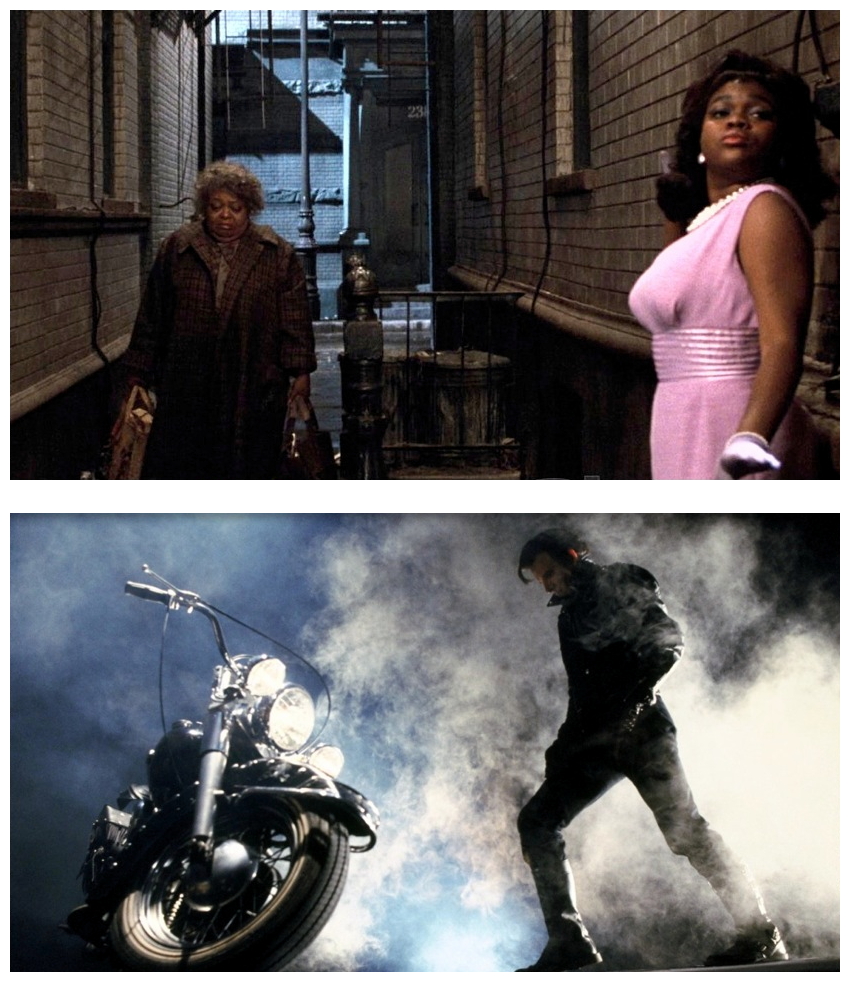
The DVD I viewed recently had a few special features. Production Notes cover several subjects including the adaptation of the 1960 film, the Greek Chorus trio who saunter around between musical numbers, and the original climax in which both Seymour and Audrey are devoured by the monster plant (vetoed after test audiences were understandably mortified). Additionally, an ambitious effects-filled ending was shot that involved Audrey II multiplying and trashing Manhattan, a brief clip of which can be glimpsed in a montage of outtakes and deleted scenes. An original 23-minute making-of featurette offers a brief yet detailed look at the production process including footage from the impoverished original. Director Roger Corman confesses how he managed to concoct a feature film around an existing shop set due for demolition, shooting The Little Shop Of Horrors in two days and one night, while movie mogul David Geffen (the ‘G’ in DreamWorks SKG) reveals the musical remake was originally conceived as a low-budget job for Steven Spielberg or Martin Scorsese. Also included was a director’s commentary from Frank Oz, isolated music track, television spots, trailers and biographies.
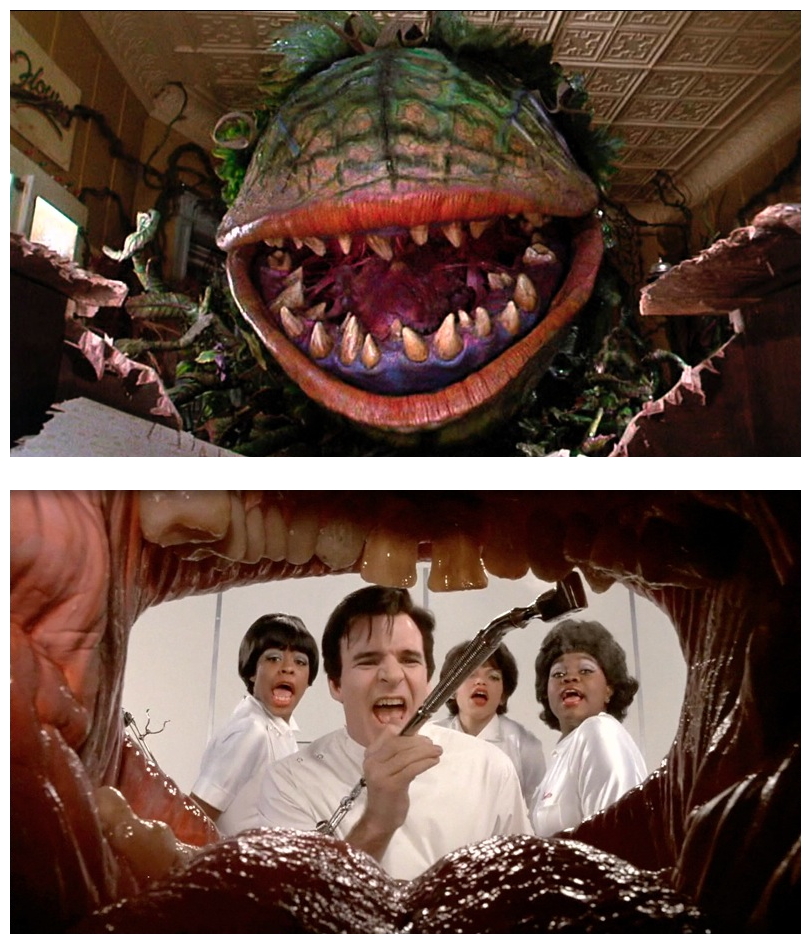
The original and its musical remake are almost totally different films and, as such, are difficult to compare. The 1982 stage musical follows the basic structure of the Corman original, but made several significant changes to the overall storyline. Menken and Ashman had to make room for songs by simplifying the narrative and removing most of the supporting characters from the original film. Seymour’s hypochondriac mother, flower-eater Fouch (Dick Miller), Mrs. Shiva (Leola Wendorff) and the two police detectives are all scrapped, while the Greek Chorus of Chiffon, Crystal, Ronette and Chiffon (Tichina Arnold, Michelle Weeks and Tisha Campbell) are added. The dentist serves a much bigger function in the overall narrative, and his abusive treatment of Audrey is what motivates Seymour into feeding the dentist to the plant. Krelboyne becomes Krelborn, Audrey Junior becomes Audrey II, and the sadistic dentist Pheobus Farb becomes Orin Scrivello (presumably the songwriters had a hard time finding words to rhyme with Krelboyne, Junior and Farb).

There are other major differences. Audrey II manipulates Seymour by tempting him with fame and fortune, and ultimately seeks world domination. In the original film, Audrey Junior’s goal was merely to survive in order to germinate, and its behaviour was like that of an annoying infant, whining until it gets fed. In the musical, Seymour actively seeks out victims for Audrey II to snack on but, in the original film, he tends to stumble across the accidental deaths of several random strangers. Alternatively, the deaths in the musical are played out entirely differently, as the victims are not strangers but main characters. As played by Jackie Joseph, Audrey was a ditzy yet strong female character who seemed to know her own mind. Ellen Greene‘s portrayal of the character (carried over from the stage musical) is a cross between Marilyn Monroe at her most childlike and a scared rabbit. She may have known the role inside-out but (trying not to sound like a male chauvinist pig) I thought Greene was a little too old for Audrey. The filmmakers originally offered the role to Cyndi Lauper (a much better choice in my opinion) who was unable to participate due to conflicting touring dates, and Madonna was also considered before they turned to Greene.
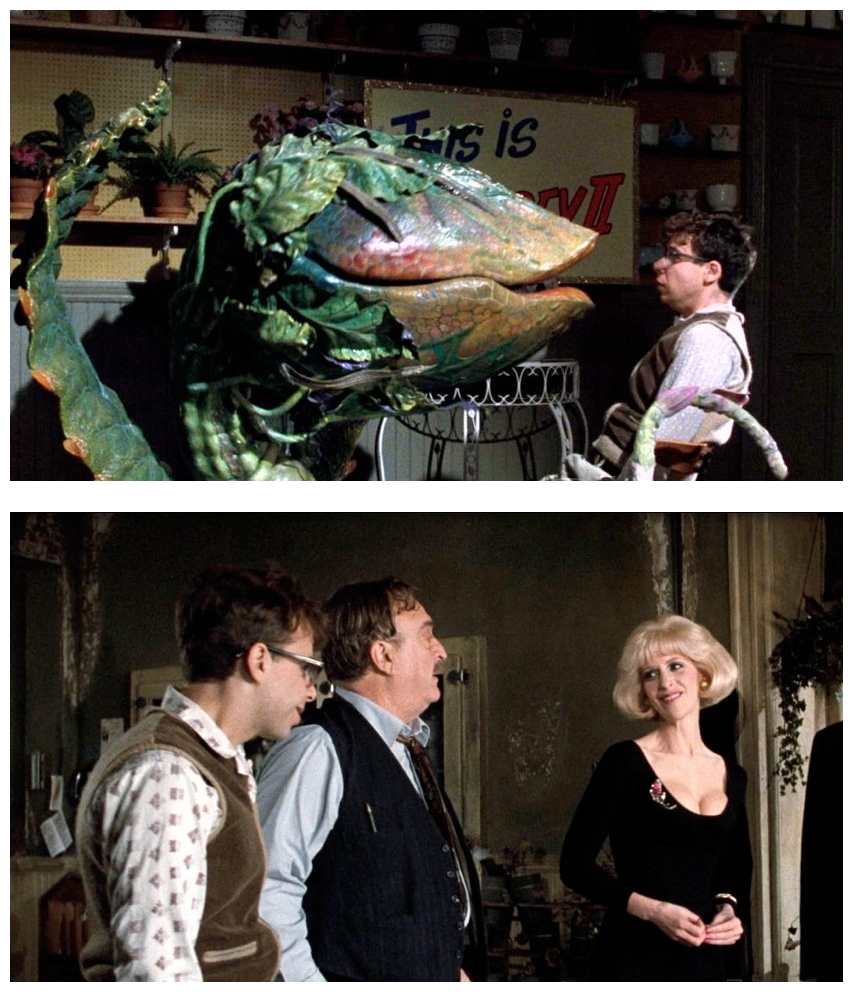
The 1986 remake gets a lot of mileage out of the likability of Moranis, upbeat songs and some of the best pre-CGI animatronics ever to be seen, but it lacks the spontaneity and creativity of the 1960 film. You may be astounded by how clever the musical is, but it’s not exactly laugh-out-loud funny – where have all the jokes gone? The original film is populated with colourful supporting characters, from Mrs. Shiva, whose extended family keeps dropping off like flies, to Fouch who eats flowers for lunch. Mel Welles steals the show with his over-the-top performance as Gravis Mushnick. In the musical, Mushnik (Vincent Gardenia) is more or less a stern father-figure but, in the original, he’s a condescending employer trying to keep his sanity as the world crumbles around him. His two employees are completely incompetent and his business is being driven into the ground. He has an outrageous Yiddish accent, speaks in broken English, and has the funniest lines in the film. Bottom line? Watch both films. They may be as different as chalk and cheese, but each is excellent in its own way. And it’s with that rather upbeat thought in mind I’ll ask you to please join me again next week when I have another opportunity to give your cinematic sensibilities a damn good thrashing with the ugly stick for…Horror News! Toodles!
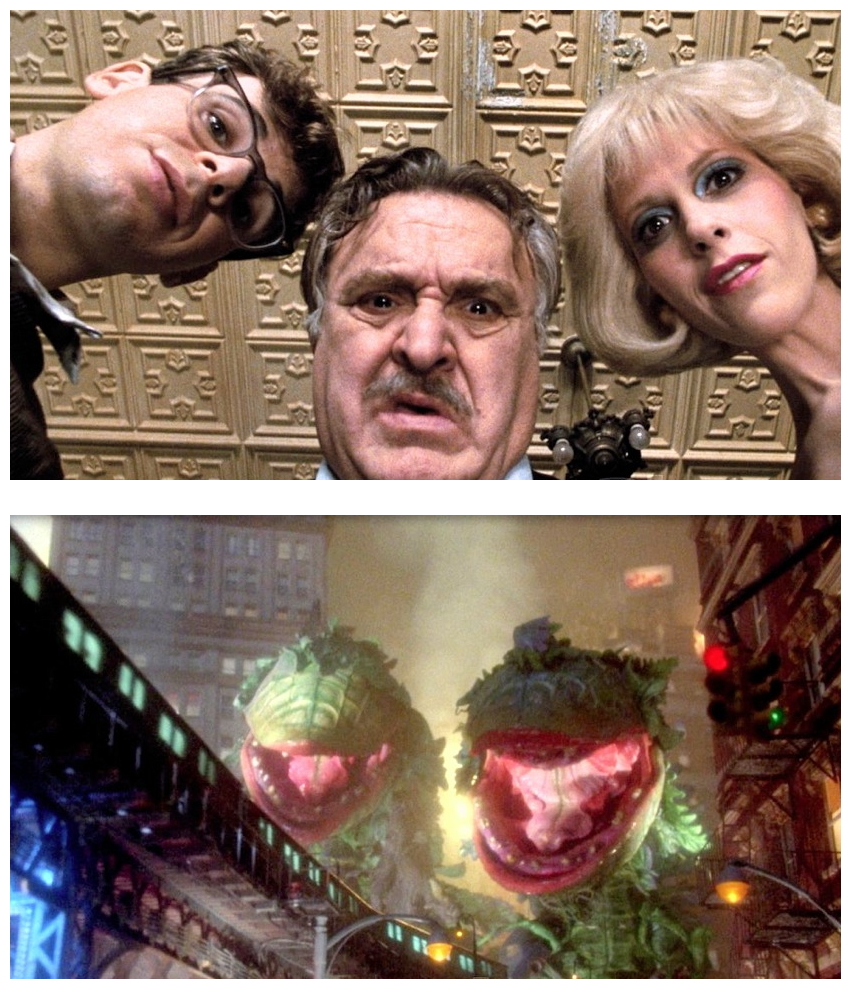
Little Shop Of Horrors (1986)
 Horror News | HNN Official Site | Horror Movies,Trailers, Reviews
Horror News | HNN Official Site | Horror Movies,Trailers, Reviews
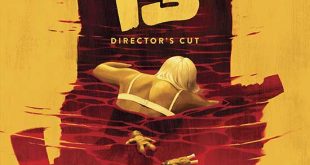
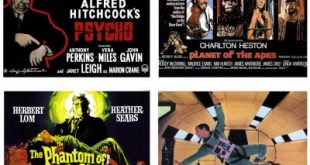
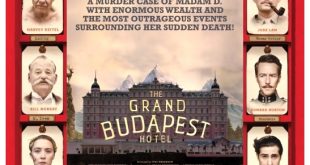
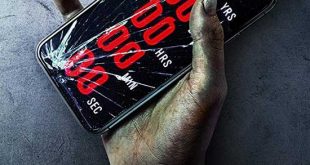


I don’t usually like musicals but I’ve always enjoyed this memorable, well shot film with it’s catchy songs and amusing lyrics. I’m embarrassed to admit I’ve never seen the original but this review has reminded me to rectify that failing.
P.S. Reading about an ending in which Seymour and his lady love are both eaten had me thinking: YES! That would have been perfect… I wish they’d done it.
P.P.S. Frank Oz knocked this one out of the park; the only other movie he did that came close was ‘Dirty, Rotten Scoundrels’.
Frank Oz is a terrific entertainer, no doubt about it, but he’s had his ups and downs as a director. Little Shop Of Horrors was essentially his first solo gig as a feature director, and he was hired basically for his knowledge of how to control and shoot animatronic puppets. With this he developed a relationship with Steve Martin, making the very funny Dirty Rotten Scoundrels, followed by the very unfunny Housesitter and a number of other mediocre comedies. His last feature film as director was actually his funniest since Dirty Rotten Scoundrels – Death At A Funeral (2007) starring Alan Tudyk, Peter Dinklage and others. If Oz wanted to finish his directing career on a high note, this is it. Recommended highly.
Death at a Funeral was definitely amusing, a neat little black comedy. I don’t even remember Housesitter so I may not have seen it. Thank-you for ever more informative trivia. You are a fount of information.